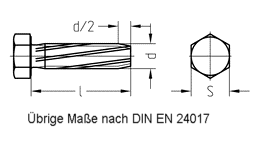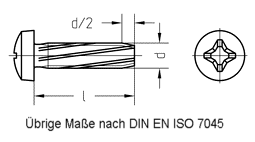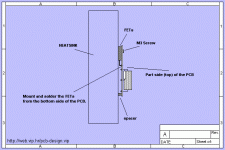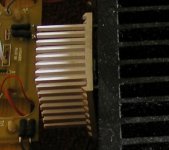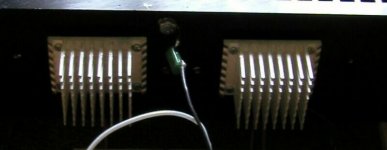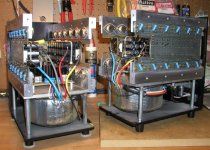Mounting pressure may be to high. If not you can use a clip that pushes down on the centre of the transistor then screws to the heat spreader.
source for TO-247 mica insulators
I know this has been asked before but I'll ask again!!
Can anyone lead us to a source for mica insulators for the TO-247 style transistors. I would prefer to use mica. Others must be having a difficult time finding these. I did find them on the avvid/ thermalloy web. They are marked as TO-218 style, but will work for TO-247 type. If all else fails I could cut some TO3 styles.
I know this has been asked before but I'll ask again!!
Can anyone lead us to a source for mica insulators for the TO-247 style transistors. I would prefer to use mica. Others must be having a difficult time finding these. I did find them on the avvid/ thermalloy web. They are marked as TO-218 style, but will work for TO-247 type. If all else fails I could cut some TO3 styles.
Mica Insulators for TO-247
I bought mica insulators from Mouser #534-4661.
They measured at .05 mm, .002" nice and thin.
If I remember right I had to order a minimum of 100 and wait for them as they are not a stocked item. Keystone is the manufacturer and uses part #4661. They are located in Astoria, NY 11105 and the telephone no. is 718-956-8900
Here is a link to the Mouser stock sheet:
http://www.mouser.com/index.cfm?han...criteria=534-4661&searchby=PartNumber&x=2&y=5
Dave
I bought mica insulators from Mouser #534-4661.
They measured at .05 mm, .002" nice and thin.
If I remember right I had to order a minimum of 100 and wait for them as they are not a stocked item. Keystone is the manufacturer and uses part #4661. They are located in Astoria, NY 11105 and the telephone no. is 718-956-8900
Here is a link to the Mouser stock sheet:
http://www.mouser.com/index.cfm?han...criteria=534-4661&searchby=PartNumber&x=2&y=5
Dave
I forgot to tell this. I originaly started this thread to find out what kind of screws people use. What I have found are some screws that open there way through as you screw them in. They are metric in M3 form. To find them search around for norm DIN 7513 type A or B and DIN 7516 type A.
Attachments
I have used the bigger ones to make my housing, to screw angles , heatsinks and other parts of the box together. You have to open a smaller hole first and with use of some lubricant you screw in. It easy and good.
The smaller ones M3 I use for mounting the transistors.
I wil show some pictures soon.
The smaller ones M3 I use for mounting the transistors.
I wil show some pictures soon.
Fets under glass
I have seen Fets mounted between the PCB and the heatsink. Is this a good idea or will the glass insulate the Fets causing them to run hotter?
I have seen Fets mounted between the PCB and the heatsink. Is this a good idea or will the glass insulate the Fets causing them to run hotter?
A circuit board is not a good heat transfer material. My guess is those fets in that circuit put out very little heat and the poor heat transfer is just enough to keep them cool. If your building any of the Pass Lab's power amps I am certain that the fets will get too hot.
Hello,
I think that someone did not understand the right way of the mounting the FETs between the heatsinks and the PCB.
Actually, there is no PCB between the FETs and the heatsinks.
The FETs are soldered and mounted to the bottom side of the PCB, and then all together is mounted on the heatsink.
The metal tabs of the FETs are facing the heatsink, and the PCB is on the top of the FETs.
Regards,
I think that someone did not understand the right way of the mounting the FETs between the heatsinks and the PCB.
Actually, there is no PCB between the FETs and the heatsinks.
The FETs are soldered and mounted to the bottom side of the PCB, and then all together is mounted on the heatsink.
The metal tabs of the FETs are facing the heatsink, and the PCB is on the top of the FETs.
Regards,
Attachments
Fets under glass
I stated the question wrong, Sorry. DUH
Will the PCB insulate the top of the FET, preventing heat escaping to the air and resulting in higher FET temperature than if the top was exposed?
I stated the question wrong, Sorry. DUH
Will the PCB insulate the top of the FET, preventing heat escaping to the air and resulting in higher FET temperature than if the top was exposed?
Not a great deal because the die is located on the face of the fet that is mounted to the heatsink there is usually a small air gap or quite a thick piece of plastic between the die and the front cover of the fet so not much heat can get out that way regardless.
chris ma
e mail me I live near you. to47 oxide insulaters are $1-49cdnfor two at future/active electronics
e mail me I live near you. to47 oxide insulaters are $1-49cdnfor two at future/active electronics
Thats right about heat escape plus the back that is attached to the heatsink is metal, so almost heat is transfered through there.
All this gained me a possibility to increase the heat dissioation on TO3P cases from about 27W to 37W.
The other good point is that SLOT1 radiators are although rare but very cheao if you'll find them. They also have holes for the screws already in right place 🙂
Ergo
The other good point is that SLOT1 radiators are although rare but very cheao if you'll find them. They also have holes for the screws already in right place 🙂
Ergo
This is probably a really dumb question....
I gather on some TO3 transistor packages, there are just two pins, and the third connection to the transistor is often the case itself (I understand its typically the collector if a BJT?).
Anyway, how do you make this third connection to the case? do you attach a washer-esque lug to one of the screws? If so, above or below the heatsink (I would assume the best connection would be above the heatsink, actually touching the package, but I simply don't see that in photographs)?
I assume that soldering just isn't an option.
Does anyone have any photos demonstrating this?
I gather on some TO3 transistor packages, there are just two pins, and the third connection to the transistor is often the case itself (I understand its typically the collector if a BJT?).
Anyway, how do you make this third connection to the case? do you attach a washer-esque lug to one of the screws? If so, above or below the heatsink (I would assume the best connection would be above the heatsink, actually touching the package, but I simply don't see that in photographs)?
I assume that soldering just isn't an option.
Does anyone have any photos demonstrating this?
Hi,
a lug is a possibility. Or, when the circuit board is underneath you could solder a nut to it and tighten the TO-3 device with it.
Or you bolt the TO-3´s directly to an (isolated) heatsink.
Musical Fidelity used to solder directly to the casing in their AX amps😀
William
a lug is a possibility. Or, when the circuit board is underneath you could solder a nut to it and tighten the TO-3 device with it.
Or you bolt the TO-3´s directly to an (isolated) heatsink.
Musical Fidelity used to solder directly to the casing in their AX amps😀
William
I used to solder them as well and it worked fine: http://www.diyaudio.com/forums/attachment.php?s=&postid=52954&stamp=1029963165
Attachments
- Status
- Not open for further replies.
- Home
- General Interest
- Everything Else
- How do you mount your transistors ?
